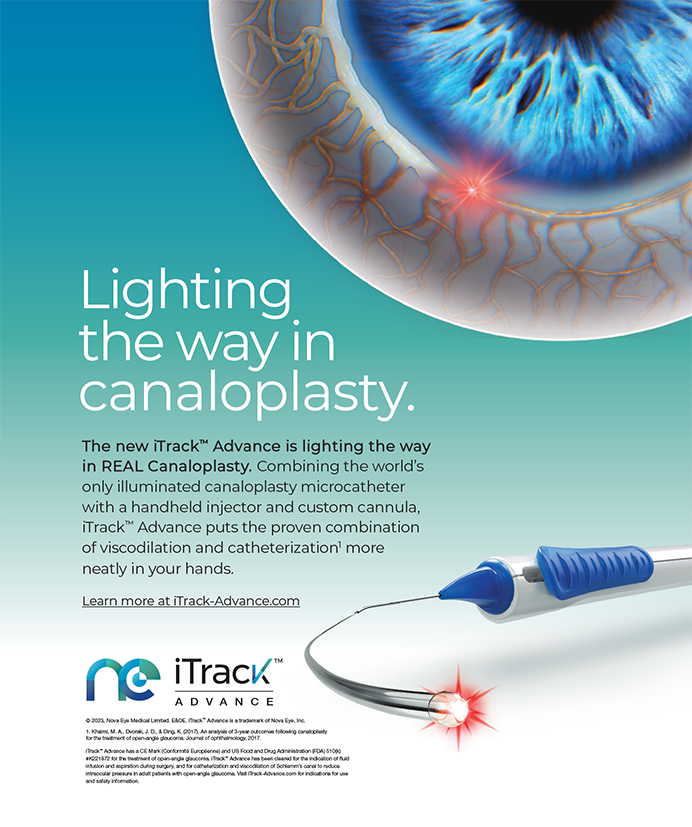How did your bachelor's degree in mathematics prepare you for a career in ophthalmology?
My interest in mathematics and the sciences was influenced by my father, who is a dean and professor of mathematics at the US Naval Academy in Annapolis, Maryland. I believe that mathematics is an excellent subject for young people to study, because it teaches thinking and reasoning, rather than rote memorization. These skills are applicable to any field or career, including refractive and cataract surgery.
Many of your colleagues may not know that you completed a 4-year residency in cardiac surgery at the Johns Hopkins University in Baltimore. Why did you switch to ophthalmology?
My decision was based purely on lifestyle. Although I enjoyed cardiac surgery and the people with whom I trained, I wanted a career that offered more flexibility in how I spent my time and that would continually offer new challenges. Ophthalmology allows me not only to do clinical work, but also to participate in research as well as to consult and teach. In addition, I think the specialty evolves much faster than cardiac surgery, because we constantly have access to new technologies.
My experience as a cardiac surgery resident continues to influence my approach to ophthalmology, however, because it helped me to develop a tremendous capacity for work. The hospital did not limit how many hours residents could work, which taught me how to persist even in the face of extreme stress and exhaustion. My colleagues and I were expected to follow the motto, "Never complain and never explain." Good surgical residents, we were told, do what is asked or expected of them without complaining, and, if they make a mistake, they should not make excuses. They should always take responsibility for their actions.
What motivates you to participate in clinical FDA trials?
I enjoy being on the cutting edge of ophthalmology and helping to develop new technology that will assist our patients. Some of the technologies I have investigated have flourished, such as phakic IOLs for myopia. These lenses do not seem to be an appropriate option for hyperopic eyes, which tend to have shallow anterior chambers. Laser thermal keratoplasty is a good example of a technology that showed early promise but was ultimately unsuccessful because of its high rate of regression.
How have excimer lasers and IOLs changed since you started performing ocular surgery?
Both technologies have improved substantially. I underwent LASIK in 1999 with the Visx S2 laser. My surgery did not include wavefront analysis, pupillary tracking, or a large optical zone, but I still ended up with 20/15 vision in each eye. We have come quite far since then. Advances in laser vision correction help my patients achieve improved visual outcomes with fewer postoperative visual aberrations and reduce the risk they will need further enhancements.
IOLs are more sophisticated due to the availability of new materials and edge designs. Patients now have access to aspheric IOLs as well as implantable lenses that correct astigmatism and presbyopia. When I started my ophthalmology residency in1996, patients' choices were limited to a monofocal IOL or the Array multifocal IOL.
My patients and I have additionally benefited from the introduction of the IntraLase femtosecond laser. I think the femtosecond laser is safer than bladed microkeratomes, because it gives me an unobstructed view of the cornea during the flap's creation. The IntraLase also allows me to complete the procedure if for some reason the device loses suction while I am making the flap.
Compared with bladed microkeratomes, the femtosecond laser is more flexible and allows me to tailor specific parameters such as the flap's thickness, diameter, size, and the location of its hinge. My partners and I still use bladed microkeratomes in our practice, although our patients are more likely to choose to have their flaps created with the femtosecond laser.
What do you like about living in Minnesota?
I like the people; they are very friendly and kind. The winters can be brutal, but the summers are gorgeous. I enjoy boating on Lake Minnetonka and have just started to take golfing lessons.


